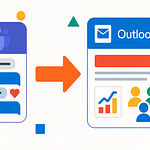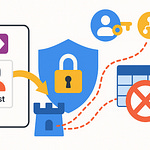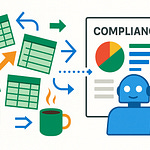What if the next time your team-building activity didn’t feel like forced small talk or awkward trust falls… but instead felt like an actual mission everyone wanted to join? Imagine your team working together to outsmart puzzles, defend a base, or hunt for hidden treasure—all inside a virtual world they already know: Minecraft. The question is, why does a game unlock collaboration better than most corporate programs? And how do you set it up without a dev team? That’s exactly what we’re breaking down today.
Why Your Team-Building Exercises Fail
Everyone knows the dreaded team-building day. The one where HR blocks out an afternoon on the calendar, everyone gathers in an oddly decorated meeting room or overpriced hotel space, and someone with far too much energy announces the theme of the day. Before long, you’re standing in a circle answering icebreaker questions about your favorite color of socks or which animal you most identify with. People chuckle out of politeness, someone makes an awkward joke to break the silence, and within five minutes the whole exercise already feels painfully contrived. It’s team-building in name, but it’s hard to ignore the thought creeping into your mind: what exactly are we building here?
The reality is that most of these activities barely leave a trace once the event ends. You might high-five a colleague while balancing a tennis ball on a spoon or stand in line to fall backward into someone’s arms, but the next morning everything feels the same. The projects are still stuck, the tensions in the team haven’t moved an inch, and the only thing most people remember is the catered lunch. The intent is clear—management wants people to connect—but the method is off. People want to feel challenged together, not forced through awkward games that could just as easily happen at summer camp. Without a sense of purpose, the entire day feels like filler, and employees quietly wait for it to be over.
That lack of purpose is where most team programs hit the wall. If you ask people afterward what the point was, the answers rarely go beyond “to get to know each other” or “to improve communication.” The minute people sense that the activity is more about checking a box than solving a real challenge, their engagement dips. Adults, and especially professionals, aren’t motivated by shallow exercises. They look for a reason to put their energy in. They want to feel progress, or at least see how the time they’re spending connects to something meaningful in their day-to-day work. Strip that away, and no matter how enthusiastic the facilitator, the session flops.
Now contrast that with something like a Minecraft scavenger hunt. Instead of standing passively through a trust fall—which is over the second you drop—suddenly you’re inside a world where your next step matters. The treasure is hidden somewhere, but you don’t know where. Every move brings you closer or further away, and you’re relying on teammates to cover more ground, share information, and strategize. You’re not faking teamwork; you’re actually doing it. And because the world evolves as you move, the stakes feel real in a way that no icebreaker can provide. One activity asks you to pretend to trust; the other makes you rely on others in order to succeed.
There’s a science-backed reason for this difference. Our brains are wired to respond to game mechanics—things like immediate feedback, clear goals, and a visible sense of progress. When you place a block in Minecraft, the effect appears right away. When your team uncovers part of a hidden puzzle, you know instantly that you’re closer to the finish line. That feedback loop triggers the release of dopamine, the neurotransmitter tied to motivation and reward. It’s the same driver that keeps people playing late into the night, solving puzzles, or building massive structures. In contrast, traditional workshops produce none of that. You stand in a circle, say your two cents, and then wait for the session to move on. Nothing in your brain lights up, no reward is triggered, so naturally the energy sinks.
Think about how this looks from the outside. On one side, you have bored employees passing around a beach ball with pre-written questions taped onto it. On the other, you see a group of people huddled around screens, genuinely coordinating who digs left, who scans the forest, and who checks under water. The difference is striking. One feels like a forced rehearsal of teamwork; the other actually builds it in real time. That’s why games succeed where workshops flop. It’s not simply that games are more entertaining—though they are—it’s that the structure of a game aligns with how the human brain processes challenges, rewards, and progress. Teams lean in because their brains are wired to do so.
And here’s the key takeaway: traditional approaches fall apart because they lack three critical ingredients—progression, feedback loops, and authentic engagement. Without those, all you have is activity for activity’s sake. With them, even simple tasks transform into powerful collaboration tools. This is exactly where Minecraft comes in. It doesn’t just provide a flashy backdrop; it naturally bakes progression and feedback into every challenge. And that’s why, in the next step, we’ll look at how this virtual sandbox bridges the gap between playing a game and building stronger teams in the real world.
The Brain on Play: Why Minecraft Triggers Real Collaboration
When teams enter Minecraft together, what looks like simple block-stacking or wandering through forests is actually something richer. Players are engaging in structured interaction that nudges cooperation without anyone forcing it. The game’s environment provides challenges, cues, and goals that the brain interprets as opportunities to coordinate. Play might feel lighthearted, but the behaviors it sparks—division of effort, collaboration, and persistence—are practical and transferable.
One of the first patterns you see is the way roles emerge naturally. In a workplace exercise, a facilitator often assigns who leads, who notes ideas, and who reports back. That structure can feel staged. Inside Minecraft, those roles self-organize instead. Someone grabs resources because they notice a scarcity, someone else scouts terrain, and another handles construction. No one tells them to do it; the challenge encourages it. A small, relatable micro-example: drop four teammates into a locked puzzle room and you’ll quickly find one checking the walls, another crouching on the floor, a third tugging at levers. The task itself sorts the responsibilities without discussion. That emergent division is the first step toward authentic collaboration.
Another key factor is how play lowers perceived risk. In most professional workshops, a wrong move can feel embarrassing or like wasted effort. That slows participation. Games flip that psychology around. Failing a puzzle, getting lost, or misplacing a block carries only minor consequences. The environment says, “try again,” rather than “you’ve just blown it in front of your peers.” That safety net encourages experimentation. Players iterate strategies quickly, test new ideas, and recover from mistakes without hesitation. The cycle of attempt, adjust, and retry strengthens problem-solving and resilience in ways rehearsed roleplays rarely achieve.
Feedback loops reinforce this effect. Every time someone pushes a button, moves a block, or defeats an enemy, they see the outcome right away. Cause and effect stay visible at every step. This immediacy is motivating in itself. Players experience micro-rewards—whether it’s progress toward a goal or a clue uncovered—that make persistence feel natural. Instead of waiting for a debrief or evaluation form, participants know instantly whether they’re on the right track. Over time these small wins build momentum, which keeps engagement levels high. Each visible sign of progress, from recovering an item to completing a puzzle, strengthens commitment to the team’s shared goal.
Communication patterns also surface in a way few traditional activities expose. If someone hoards supplies or rushes ahead without explaining their plan, frustration shows instantly—in both the game and the team chatter. When roles overlap, tension appears without a facilitator calling it out. These moments aren’t theoretical; they’re observable and immediate. The team can reflect on what worked, what didn’t, and how communication shaped the outcome. It’s collaboration under real conditions, but the reset button makes it safe to learn from.
What’s striking is that players don’t perceive this as training or simulation—it feels like problem-solving in its own right. By practicing together in this environment, teams rehearse leadership, adaptability, and responsibility organically. That rehearsal matters outside the game. They’ve already coordinated under time pressure, shared resources, and recovered from mistakes. The behavior doesn’t need translating; it carries over naturally.
The broader takeaway is that play works not because it disguises work with fun, but because it targets the systems that shape collaboration: self-organization, experimentation without penalty, and ongoing feedback. Minecraft just happens to bundle these features into an environment that people recognize and enjoy. That’s why using play for team-building sticks in ways that icebreakers or scripted tasks rarely do.
And while all of this may sound intricate, the practical side is straightforward. You can set up a team challenge quickly, often within an hour depending on your familiarity with Minecraft. Once the environment is running, the same dynamics around roles, feedback, and resilience start appearing almost immediately. Which brings us to the next step: how you can create your first challenge without needing technical staff or complex coding.
Your First Minecraft Team Challenge in 30 Minutes
The simplest way to get started is to run a short Minecraft scavenger hunt as your first structured challenge. Think of it as a low-effort template that gives you a working activity in about 30–60 minutes, even if it’s your first time. You don’t need coding, custom mods, or advanced server setup. The built-in tools already cover what you need. What stops most people isn’t the complexity—it’s the assumption that complexity must exist. In reality, it’s more about a few quick decisions and some lightweight prep.
Here’s how you can frame it as a spoken checklist your team can follow along with:
Step one: choose or generate a fresh world.
Step two: set a clear play boundary so people know where the game actually happens.
Step three: hide target items in locations or inside chests.
Step four: define clear win conditions before anyone starts searching.
Step five: pick your hosting option—local session if everyone is together, managed hosted option if remote—and send invites.
Step six: timebox the round so the game stays focused.
That’s it. Six steps. None of them involve scripts or plugins. And the reality is, teams respond better to clear constraints than wide-open chaos. When everyone knows what the map is, where they can move, what counts as a win, and how long they’ve got, the activity feels purposeful instead of endless wandering.
To keep things practical, we recommend running small, bite-size teams. Three to six people per side is usually a good balance. Pair that with shorter rounds—10 to 20 minutes works well—so people stay engaged without drifting. A short break between rounds allows for reflection, then you reset and try again. The shorter format is especially useful when you’re mixing experienced gamers with first-timers, because no one feels locked into a marathon session.
Before you hit start, check two quick coordination points. First, make sure everyone can talk while playing—whether that’s your normal collaboration tool, a voice channel in Teams, or just an open call running alongside the game. Second, confirm that everyone understands the play area. Clarifying both ahead of time removes most of the friction that causes rounds to stall.
If you’re running this remotely, avoid port-forwarding headaches by using a managed hosting option. These are lightweight, subscription-style worlds you can invite people into with a link. They trade flexibility for simplicity, but that’s usually the right choice when your priority is reducing setup time, not tweaking server rules. For in-person groups, a local session hosted on one machine is often all you need.
The value of this kind of scavenger hunt lies in its clarity. Players immediately know their goal and can see progress in real time as items get found and returned to a chest. Accountability is baked in—everyone can see who collected what—so quieter participants naturally find ways to contribute. And because the map has limits and a clock is running, people start assigning roles without prompting. One player searches caves, another checks tree lines, someone else sweeps the river. Nobody volunteers them; the situation makes it obvious.
You don’t need to over-engineer scoring either. Asking teams to bring their finds back to a central chest creates a visible scoreboard. When time runs out, you just count what’s in the box. That concrete tally gives closure, fuels discussion, and sets up the energy for a second round. You’ll notice how quickly conversations shift from casual hunting to actual strategy. People start suggesting search patterns, calling out missed spots, or coordinating routes. That’s the team-building happening in real time—not because you told them to do it, but because the environment pushed them to.
What grabs most leaders is how accessible the process feels after doing it once. What looked like technical intimidation turns into “I can actually run this on my own.” Within roughly an hour, a team that was skeptical of Minecraft turns into a group laughing, planning, and negotiating. That tangible switch from abstract “team training” to lived coordination is what makes the experience stick.
And the scavenger hunt is just the beginning. Once you’ve seen how natural collaboration emerges in a low-pressure search, the next level is to add stakes and conflict. Because while looking for items encourages teamwork, introducing an active opponent exposes gaps much faster.
Capture-the-Flag: Exposing Real Communication Gaps
Capture-the-Flag is where communication cracks show themselves in unexpected ways. Inside Minecraft, the format is simple: two groups, two bases, and a flag in each one. Your mission is obvious—defend your own flag while trying to steal the opposing team’s. At first glance it feels like pure play, but the pace and pressure quickly shift focus to something else: how effectively people organize, share information, and respond under stress.
Compared to scavenger hunts, which spread attention across the map, capture-the-flag condenses everything into critical moments. Attacks come fast, defenses have to adapt instantly, and no workshop or break-out discussion can pause the action. If attackers rush forward without coordination, they burn energy and make no progress. If defenders wait silently while the base is under threat, the team loses ground in seconds. Communication isn’t optional—it’s the only mechanism for survival in the match.
Here’s how that difference becomes visible. In one session, a group ignored role assignment and tried to improvise on the fly. Players scattered, chased side battles, and no one protected the base. Their flag disappeared in under three minutes. In another match with almost the same setup, a team spent less than a minute clarifying roles out loud—who defends, who scouts, who gathers resources. That tiny ritual gave them just enough structure to hold together, push back attackers, and strike at the right moment. The comparison isn’t about video game skill. It’s about clarity and communication under time pressure.
That’s also where a fast debrief adds value. Right after each round, you can ask three concise questions. Who called out roles, and how was that received? Where did communication break down under pressure? What one change would we try next round? Having the group reflect on those points sharpens attention toward what actually matters—coordination, clarity, and adaptability. It reinforces the lesson while it’s still fresh, and it’s lightweight enough to keep momentum moving into the next game.
The key is to make role briefing a habit, not an afterthought. A simple intervention—set aside 30 to 60 seconds at the start of each round to confirm roles out loud—pays back several times over during the match. It reduces chaos, minimizes duplication, and gives everyone a reference point to adjust from. This practice alone often separates a team that falls into finger-pointing from one that adapts and stays aligned.
The match itself also provides material you can use beyond the session. Encourage someone to jot a few notes about key moments—when communication clicked or collapsed. If you’re playing with screen-share tools available, capture a short clip of a turning point. And if you’re hosting a server, exporting activity logs can sometimes highlight who built, crafted, or gathered at given moments. These artifacts don’t need to be formal reports; think of them as practical evidence you can share back with the team or stakeholders. They turn a fun match into documented insight about behavior under load.
What teams usually see during this exercise reflects the same hidden factors that undermine projects at work. Someone holding back information, unequal distribution of effort, lack of clarity on ownership—these don’t feel abstract here, they play out directly in front of everyone. The advantage is that the stakes are safe. Losing a flag in Minecraft is a lesson, not a damaged client relationship.
When teams connect those in-game patterns back to their day jobs, the impact is stronger than any survey. Instead of checking a box that says “communication could improve,” they’ve witnessed the cost of vague or missing signals in real time. And once they’ve experienced it, the behavior is hard to forget. They leave not just with the abstract idea that good communication matters, but with a felt sense of how it changes outcomes when time and resources are tight.
Capture-the-flag works as more than just a test of reactions—it’s a stress check for how people communicate, assume roles, and handle shared responsibility. It shines a light on where signals break down, but also shows where trust and structure hold teams together. And once those lessons surface, the natural question becomes: how do you keep building from here?
From Scavenger Hunts to Strategy Missions: Building Progression
Progression is what turns a single round of gameplay into an ongoing framework for collaboration. A scavenger hunt is engaging the first time, and capture-the-flag brings new intensity when you introduce direct competition. But if nothing evolves after that, people quickly recognize the limits. Just like in real projects, a sense of forward movement matters. Teams need challenges that grow in scope so new skills can surface, habits can form, and participation stays meaningful. That’s where strategy missions step in—the next stage that stretches attention and coordination over multiple layers instead of a one-off sprint.
A mission differs from short games because it forces extended planning. Rather than reacting in the moment, teams need to forecast needs, allocate roles, and adapt when things don’t go according to plan. This mirrors workplace projects more closely than quick matches. An adventure-style mission can combine navigation, resource trade-offs, timed defense, and a final deliverable. It creates tougher questions: should we stock up before heading into danger, or risk moving fast with fewer supplies? That constant balancing act is where collaboration deepens, because there is rarely a single correct answer—only better or worse coordination.
One way to make this concrete is to think of progression across three sessions. Session one: a short scavenger hunt where players collect and deposit items, which introduces the platform and basic mechanics. Session two: a capture-the-flag run that demands role assignment and real-time communication under pressure. Session three: a compact mission that pushes sustained planning, such as navigating hostile terrain while completing a multi-step objective. You can scale session length and complexity to fit your team’s experience, but this simple blueprint introduces discovery, pressure, and sustained collaboration in sequence.
Consider a sample mission structure you could run as that third step:
1. Gather rare stones scattered across the map, requiring players to split up and coordinate resource sharing.
2. Defend a temporary camp from periodic waves of attackers, forcing some to switch into protection roles while others continue exploring.
3. Complete a final timed build—such as restoring power to a fortress—where planning, material management, and clear task division all matter.
Each stage shifts responsibility and tests different aspects of teamwork. Someone who thrives at short sprints may struggle when defense requires patience. Others who stayed quiet earlier might step in as organizers when resources run low. These shifts are valuable not because they reveal hidden “leaders,” but because they show how context changes contribution.
The value of progression here isn’t about neuroscience. It’s about repeated, progressively harder challenges that create reference points your group can draw on later. When teams juggle resource shortages, recover after setbacks, and adjust their strategy across multiple stages, they’re not only solving problems in a game context. They’re building memory of how they worked together in moments of uncertainty. That memory becomes a habit they can recall when workplace projects present similar coordination challenges.
To keep engagement high, avoid running the same format back to back. Instead, change objectives each session—rotate between collection goals, direct conflict, and resource-driven strategy. Mixing formats forces variety, prevents habituation, and keeps the energy intact. There’s no strict rule for length, but running a progression cycle across three to four sessions over a month works for many groups. You get enough exposure to build momentum without draining enthusiasm.
Another practical tip is to measure small signals of improvement over time. After each game, note two simple observations in the debrief. Who called roles, and how was that received? How often did teammates ask for clarification? These anecdotal metrics are easy to track, don’t overwhelm the session, and provide tangible discussion points in follow-ups. If you see role assignment becoming smoother, or more teammates asking clarifying questions sooner, that’s a sign progress is carrying across contexts.
When teams experience progressively harder missions, the takeaway is bigger than “we played a fun game.” The story becomes “we faced increasingly complex challenges and improved together.” That collective memory builds morale and confidence, just like successful delivery cycles at work. Designing with progression prevents team-building from feeling like one-off entertainment and turns it into a growth path people recognize and respect.
Once you see that shift in action, it reframes how you think about exercises like these. The strongest outcomes don’t come from flashy activities or elaborate themes. They come from designing challenges that reveal natural behaviors, encourage adaptation, and build small wins into a larger arc of shared effort.
Conclusion
So here’s the bottom line. Traditional team-building often falls flat because it feels staged and lacks purpose. Game-based structures fix that by giving teams progression, feedback, and visible results. And the smartest way to start isn’t with an elaborate setup—it’s with one small, contained challenge you can scale later.
Here’s a quick starter plan:
1) Pick a world and block off 10 minutes for a scavenger hunt.
2) Run one round and use the three debrief questions.
3) Next session, upgrade to capture-the-flag.
Try a 20-minute scavenger hunt this week and then drop one sentence in the comments about what surfaced in your team—whether it was a communication gap, a new leader stepping up, or something else.
If you want more practical blueprints for hybrid teams, hit subscribe and add your team size in the comments so we can tailor upcoming examples.











